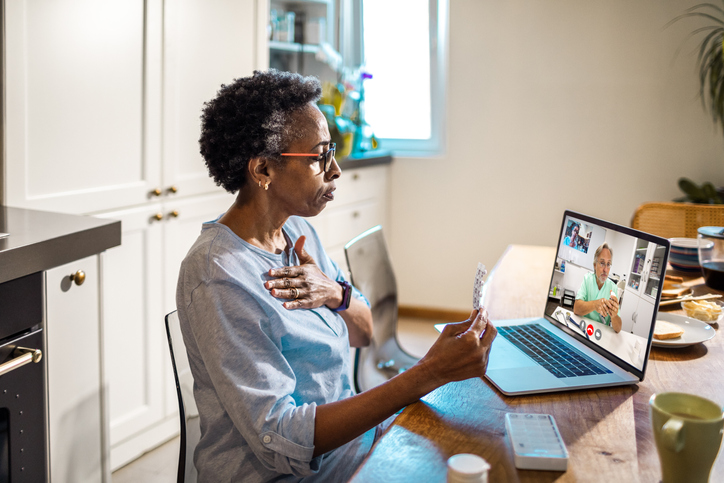 |
| Patients reported being equally as satisfied with virtual appointments as with in-person visits, study found. Photo: Getty Images. |
Many doctors pivoted to telemedicine as an alternative option for patient care during the pandemic, yet this shift to virtual visits prompted concerns in some circles regarding quality of care and patient satisfaction. However, new research published in Optometry and Vision Science found patients were equally satisfied with virtual and in-person visits, which validates the continued use of telemedicine for eye care visits, the study’s authors suggest.
The investigative team from Case Western Reserve University School of Medicine and the Cleveland Clinic analyzed post-visit survey results of 211 virtual patient encounters and 307 in-person patient visits. Survey scores ranged from one (very poor) to five (very good). Virtual appointments were offered through video conferencing (115), phone call (85) or hybrid visit (14), which included both virtual and in-person components for those who needed in-person vision testing, IOP reading or imaging.
The researchers found patient satisfaction scores were roughly the same in both groups—virtual visits scored 4.82 and in-person exams, 4.85.
The findings contribute to a growing body of work that argues for increased virtual exams, which check the box for COVID social distancing requirements, in addition to offering the increased potential to address inequalities in healthcare access that sometimes come into play for in-person visits, the authors suggested.
While most respondents had similar feedback regardless of whether they had virtual or in-person visits, the results of one survey question differed slightly between the two groups. Specifically, the virtual visit patients were asked about their likelihood of recommending a video visit to others, while in-person patients were queried regarding their likelihood of recommending the practice to others. For this question, the average score for virtual visits was 4.74, while the average score for in-person exams was 4.86.
Also of note: demographics didn’t seem to influence satisfaction scores, the investigators said.
The virtual format is best suited for conditions that are treatable, self-limited and don’t require intensive follow-up or complimentary exams, the authors suggested. Additionally, virtual visit patients were more likely to be prescribed a new medication during their visit, as conditions that can be assessed remotely are more amenable to conservative medical management.
Roan VD, Sun KJ, Valentim CS, et al. Patient satisfaction in the era of COVID-19: virtual visit vs. in-person visit satisfaction. Optom Vis Sci. December 9, 2021. [Epub ahead of print]. |

